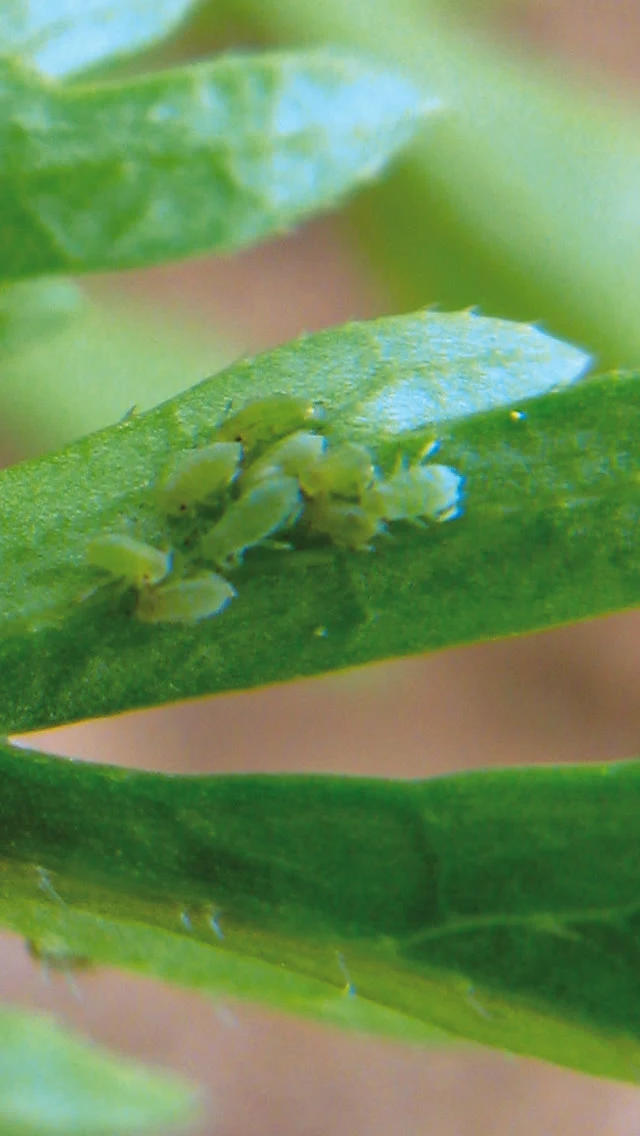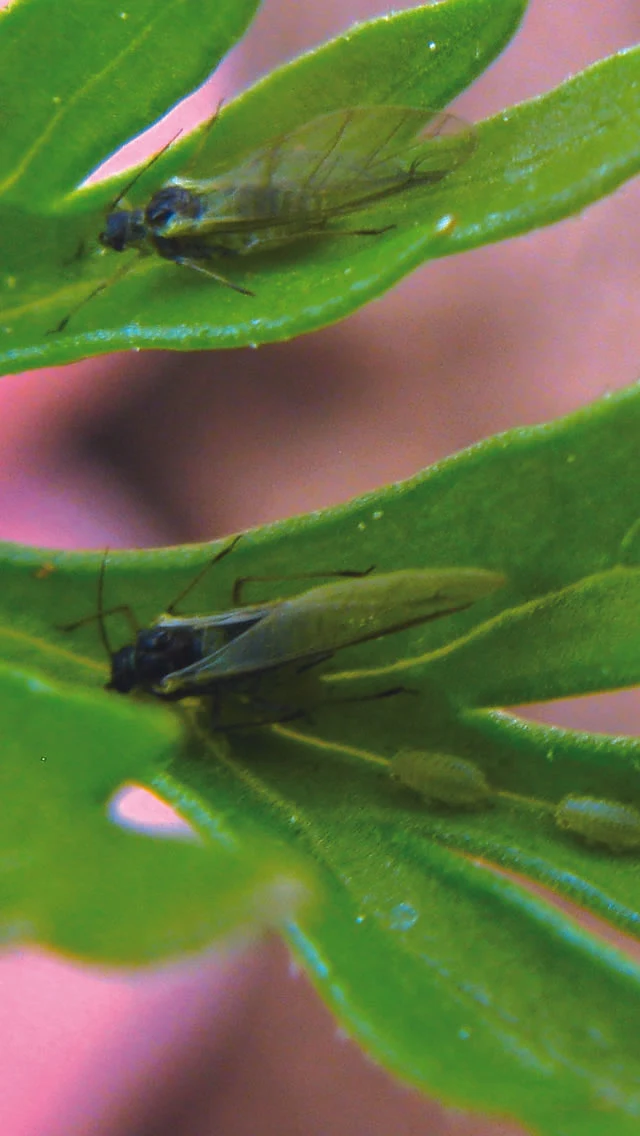
Willow Carrot Aphid
Cavariella aegopodii
Identification
This aphid is green or yellow-green and up to 2.5 mm in length. The winged form is darker and more easily seen due to a darker patch on the upper side of the abdomen.
Symptoms
When present in large numbers the leaves can become discoloured and distorted as well as being covered with both ‘honeydew’ and discarded skins.
Of greater importance to carrot growers is the transmission of a range of extremely damaging viruses. These include the carrot motley dwarf virus, which produces a yellow mottling of the leaves and plant stunting, parsnip yellow fleck virus, carrot red leaf virus, parsnip mosaic virus and celery mosaic virus.
Leaf discolouration caused by virus infection can be confused with drought stress or carrot root fly attack. Observations of root symptoms have been described as ‘bearding’, where roots have a proliferation of root hairs, and ‘kippering’ where the roots split open. Later in the season dark discolourations can develop on the outside of the roots and tips as well as internal streaking.
Life-cycle
This species overwinters as eggs around bud axils of willows (Salix spp.). These hatch in February/March and the young aphids feed first on young shoots, then on foliage and catkins as colonies start to develop. In May winged forms disperse to nearby umbelliferous plants and other host crops.
Cow parsley is one such host which is widely abundant throughout the UK in hedges, field margins and roadside verges. Cow parsley is genetically closely related to carrots and can act as an alternative host for carrot viruses.
Aphid migration generally peaks in June and then declines. Later in the season winged forms return to umbelliferous plants in hedges and other nearby habitats, and after mating, eggs are laid on willow species in the autumn.
In warmer conditions some individuals are able to survive the winter on umbelliferous plants in sheltered locations or on carrot plants protected from cold conditions under a covering of protective straw.
Importance
The willow-carrot aphid is a major pest of carrots, celery, parsnips and parsley and where pest pressure is severe economic loss can be significant especially on carrots sown in April/May. In Lancashire in 2007 (and to a lesser extent in 2008) many fields of early sown carrot crops were written-off as a result of a severe virus outbreak.
The worst affected fields were those sown before April 3rd (particularly uncovered crops). In subsequent years problems were reported in Norfolk and Suffolk (2008) and Yorkshire (2009).
Aphid numbers will increase more rapidly in hot dry conditions.
Threshold
A suitable insecticide spray programme should commence at the first reports of aphid movement into crops.

Winged willow-carrot aphid adult © Warwick HRI

Wingless willow-carrot aphid nymphs © Warwick HRI

Winged willow-carrot aphid adult, side view of wings ©Warwick HRI


